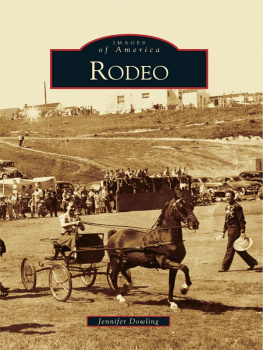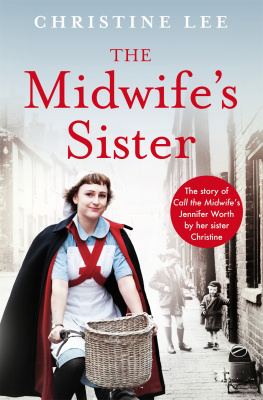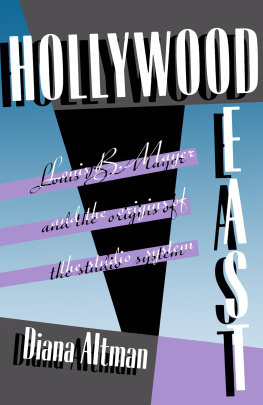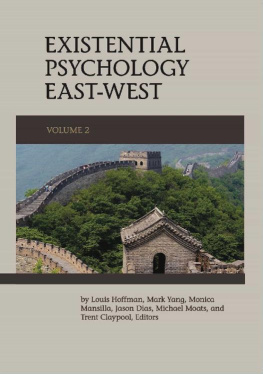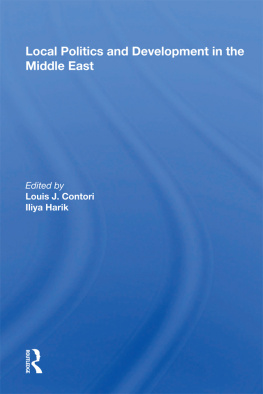Abandoned in the Heartland

THE GEORGE GUND FOUNDATION
IMPRINT IN AFRICAN AMERICAN STUDIES
The George Gund Foundation has endowed
this imprint to advance understanding of
the history, culture, and current issues
of African Americans.
Abandoned
in the Heartland
Work, Family, and Living
in East St. Louis
Jennifer F. Hamer

University of California Press, one of the most distinguished university presses in the United States, enriches lives around the world by advancing scholarship in the humanities, social sciences, and natural sciences. Its activities are supported by the UC Press Foundation and by philanthropic contributions from individuals and institutions. For more information, visit www.ucpress.edu .
University of California Press
Berkeley and Los Angeles, California
University of California Press, Ltd.
London, England
2011 by The Regents of the University of California
Library of Congress Cataloging-in-Publication Data
Hamer, Jennifer.
Abandoned in the heartland : work, family, and living in East St. Louis / Jennifer F. Hamer.
p. cm.
Includes bibliographical references and index.
ISBN 978-0-520-26931-6 (cloth : alk. paper)
ISBN 978-0-520-26932-3 (pbk. : alk. paper)
1. East Saint Louis (Ill.)Social conditions21st century.
2. East Saint Louis (Ill.)Economic conditions
21st century. 3. Working classIllinoisEast Saint
Louis. 4. African AmericansIllinoisEast Saint
Louis. I. Title.
HN80.E27H37 2011
305.5620977389dc22 2010052399
Manufactured in the United States of America
20 19 18 17 16 15 14 13 12 11
10 9 8 7 6 5 4 3 2 1
In keeping with a commitment to support environmentally responsible and sustainable printing practices, UC Press has printed this book on Rolland Enviro100, a 100% post-consumer fiber paper that is FSC certified, deinked, processed chlorine-free, and manufactured with renewable biogas energy. It is acid-free and EcoLogo certified.
For my family: Especially to my son, Nile;
daughter, Zoe; and spouse, Clarence E. Lang;
grandmother Frieda Lewis; mom and dad, Elsie
and Johnnie Hamer; mother-in-law, Delores
Lang-Patton; sisters, Frieda, Stephanie, Sonnie,
Khadija, and Sheri; brothers, Lawrence, Mark,
and Tom; nieces and nephews, Rabha, Regge,
Mark, Lily, Olivia, Sam, Ben, Johnnie Dennison
(J.D.), and Macy; and the many families and
children in East St. Louis, Illinois
CONTENTS
ILLUSTRATIONS
Following .
ACKNOWLEDGMENTS
I dedicate Abandoned in the Heartland, a book about families, to my own family of children, a spouse, parents and grandmother, sisters, brothers, nieces, and nephews. Yet, my definition of family, as many know, extends well beyond the traditional categorization and includes a larger community of others. I list these others below and hope they understand that the appearance of their names, in no way, adequately reflects the sincere appreciation that I have for the tremendous and varied support that each has contributed to the development and completion of this work. To begin, Clarence E. Lang, my spouse and colleague, more than anyone, supported the realization of this manuscript. His own work on class politics and the black struggle for rights in St. Louis, Missouri, informed my theoretical understanding of the heartland and its meaning for African Americans and working families. His expertise informed the project. Yet, while this was certainly critical, it was the strength of his coparenting, love, and partnership that made the books completion possible. East St. Louis resident Sharon Ward, a long-time friend and colleague, has worked tirelessly and admirably for her city. She was instrumental in my ability to access residents, to observe the space, and to better appreciate the rich potential of this declining but hopeful place. I must thank Christopher D. Benson, award-winning journalist and author of The Death of Innocence: The Story of the Hate Crime That Changed America. His passion for equity and justice inspired my analysis and affirmed the meaning of this book project for families and communities. Equally important, his presence was essential to my ability to balance the demands of the project with other professional obligations and family. He, Adlai Murdoch, Robin Jarrett, and William E. Berry, provided the gentle steering and the push that only the dearest friends and colleagues know how and when to deliver. I thank Joseph Pleck, Geraldine Peeples, and historian Vernon Burton, who invited me onto projects that further grounded me in the city of East St. Louis. William T. Summerville, Abdul Alkalimat, Regina Stevenson, Kevin Franklin, Brendesha Tynes, Lou Turner, Ruby Mendenhall, Jorge Chapa, William Patterson, Sundiata Cha-Jua, Helen Neville, Ray Muhammad, Erik McDuffie, and Tom Weissinger, all part of the University of Illinois at Urbana-Champaign, were supportive colleagues. Im grateful especially to David Ivy and Shirley Olson, of the Department of African American Studies at the University of Illinois at Urbana-Champaign; Shirley was especially invaluable as she helped me to manage my time while I served as the head of a department, university administrator, and member of the faculty. Many current and former graduate students assisted me as well. From Southern Illinois University at Edwardsville: Kathleen Marchioro, Aishia Jefferson, Faith Barnes, and Darla Hernandez; Wayne State University: Waverly Duck; and the University of Illinois at Urbana-Champaign: Mario Perez, Shy-won Berry, Kisha (Ishywanza) Rivers, and Tony Laing supported the research by collecting data, reviewing past literature and drafts of the manuscript, challenging my analysis of findings, or buttressing my other obligations as I attended to interviews, analysis, travel, and writing. Jabari Asim, award-winning author and editor of The Crisis magazine, reviewed the manuscript and sharpened its thesis. Together, he and Clarence E. Lang inspired and guided the conclusion of the text. Renowned family scholar Robert Hill generously gave his time to review the earliest drafts of this manuscript. I was overwhelmed by his encouragement and his affirmation of my skills as a family scholar. I will forever appreciate all that he continues to offer to the field of family studies and policy. I was fortunate as well to develop long-lasting friendships with Venessa A. Brown and Stephen Hansen, who are both faculty and administrators at Southern Illinois University at Edwardsville and who offered both personal and professional guidance early in the book project. The Institute for Urban Research at Southern Illinois University at Edwardsville offered seed funding to support the early stages of research. Artist Melodye Rosales generously provided creative guidance to the search for images to build into the text. The insert of archived and newly produced photographs, I hope, brings the narrative to life for those unfamiliar with the city and its residents. Odell Mitchell, whose brief biography appears elsewhere in this book, was sensitive yet meticulous in his production of photographs that captured life in East St. Louis today. I must also thank Alford Young, who provided critical theoretical direction to the book content at varying stages, as well as Leon Wilson, James Loewen, Eduardo Bonilla-Silva, Anthony Lemelle, Robert Chrisman, and Robert L. Allen for steadfast support at varying times in the projects development. My intellectual engagement especially with the last two (both of whom are co-editors of the
Next page

